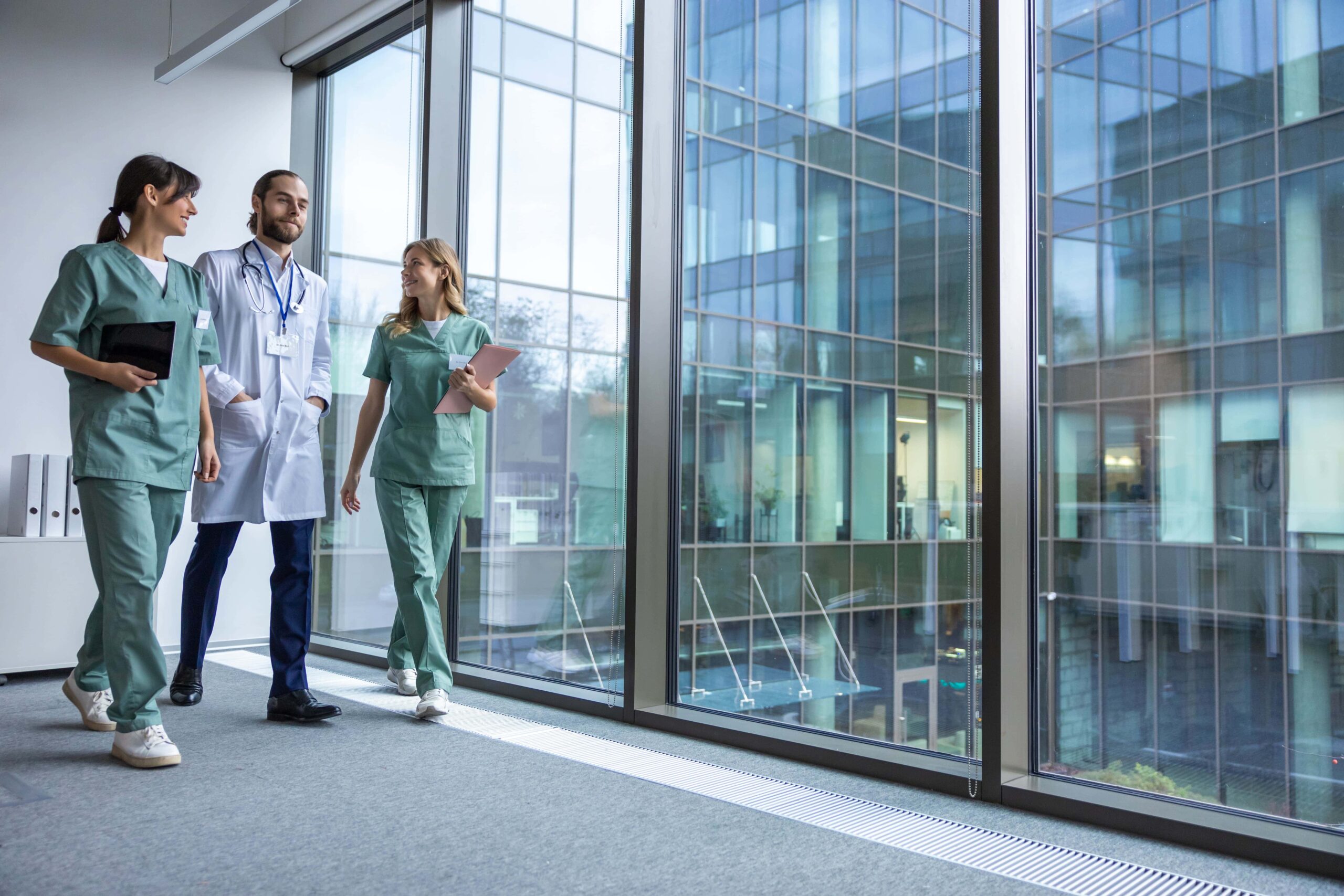Commercial LED lighting retrofit incentive programs represent a significant opportunity for Akron businesses looking to reduce energy consumption, lower operational costs, and contribute to sustainability goals. These programs offer financial incentives to offset the initial investment of upgrading outdated lighting systems to energy-efficient LED technology. With Ohio’s focus on energy conservation and Akron’s commitment to sustainable business practices, local companies can leverage various federal, state, and utility-sponsored programs to make these improvements more affordable while enjoying long-term benefits.
Understanding the available incentive programs, qualification requirements, and application processes can be complex but rewarding for business owners. LED lighting retrofits typically deliver 50-75% energy savings compared to traditional lighting systems, with incentive programs potentially covering 15-70% of project costs depending on the specific program and scope. This guide explores the comprehensive landscape of commercial LED lighting retrofit incentives available to Akron businesses, helping you navigate the options and maximize financial benefits while improving workplace conditions and reducing environmental impact.
Understanding LED Lighting Retrofits for Commercial Properties
LED lighting retrofits involve replacing existing lighting fixtures with energy-efficient LED alternatives, significantly reducing energy consumption and maintenance costs while improving lighting quality. For Akron businesses, understanding the fundamentals of LED retrofits is essential before exploring available incentive programs. Similar to how workforce optimization software can transform business operations, LED technology represents a transformative investment for commercial properties.
- Component Replacement vs. Full Fixture Replacement: Retrofits can involve replacing just the lamps while keeping existing fixtures, or completely replacing outdated fixtures with integrated LED systems, each offering different efficiency levels and incentive eligibility.
- Light Output and Distribution: LED retrofits can be designed to maintain or improve current lighting levels while eliminating dark spots and providing more uniform illumination throughout commercial spaces.
- Control Systems Integration: Modern LED retrofits often include advanced controls like occupancy sensors, daylight harvesting, and programmable timers that maximize energy savings and may qualify for additional incentives.
- Color Temperature Options: LEDs offer flexible color temperature options that can enhance workplace productivity, similar to how effective shift planning can optimize workforce performance.
- Lifespan Considerations: Commercial LEDs typically last 50,000-100,000 hours compared to 10,000-30,000 hours for traditional lighting, dramatically reducing maintenance requirements and associated costs.
When planning an LED retrofit project, businesses should conduct a comprehensive lighting audit to establish baseline energy usage and identify opportunities for improvement. This process helps quantify potential savings and determines which incentive programs might be applicable. Just as data-driven decision making improves business outcomes, a detailed lighting assessment provides the foundation for an effective retrofit strategy.
Benefits of Commercial LED Lighting Retrofits in Akron
Akron businesses that invest in LED lighting retrofits realize numerous advantages beyond simple energy savings. These benefits extend across financial, operational, and environmental domains, creating a compelling case for upgrade projects even before incentives are considered.
- Energy Cost Reduction: Akron businesses typically experience 50-75% reduction in lighting-related electricity costs, with some warehouses and industrial facilities seeing payback periods as short as 1-3 years after incentives.
- Decreased Maintenance Requirements: The extended lifespan of LED lighting significantly reduces maintenance costs and disruption, similar to how effective cost management strategies optimize operational expenses.
- Improved Workplace Productivity: Better lighting quality reduces eye strain and improves visibility, potentially increasing worker productivity by 3-5% according to studies of Akron manufacturing facilities.
- Enhanced Safety Conditions: Brighter, more uniform lighting reduces workplace accidents and improves security, particularly in warehouse, manufacturing, and parking facilities throughout the Akron area.
- Carbon Footprint Reduction: LED retrofits help Akron businesses meet sustainability goals by reducing electricity consumption and associated greenhouse gas emissions, aligning with Ohio’s energy conservation initiatives.
LED retrofits also contribute to enhanced building value and tenant satisfaction for commercial real estate properties. Many Akron businesses report improved customer experiences in retail environments and increased property marketability after completing lighting upgrades. Just as employee satisfaction is essential for business success, improved lighting contributes to occupant comfort and satisfaction in commercial buildings.
Available Incentive Programs for Akron Businesses
Akron businesses can access multiple tiers of incentive programs for LED lighting retrofits, including federal, state, and utility-specific offerings. Understanding these options helps businesses maximize financial support for energy efficiency projects, similar to how resource utilization optimization maximizes operational efficiency.
- Federal Tax Incentives: The Commercial Buildings Tax Deduction (Section 179D) offers up to $1.88 per square foot for lighting projects that exceed ASHRAE standards by at least 25%, with Akron businesses eligible for full deduction in the tax year of installation.
- Ohio Energy Loan Fund: Provides low-interest financing for energy efficiency projects, including LED retrofits, with loans ranging from $250,000 to $2.5 million for eligible Akron commercial and industrial facilities.
- FirstEnergy/Ohio Edison Rebates: Offers prescriptive and custom rebates for commercial customers in Akron, with LED lighting retrofits typically qualifying for $0.20-$0.60 per watt reduced through their Business Energy Efficiency Programs.
- Akron Energy Special Improvement District: Provides Property Assessed Clean Energy (PACE) financing that allows businesses to fund energy improvements through property tax assessments, spreading costs over 10-20 years.
- Efficiency Smart Program: Offers technical assistance and financial incentives for commercial lighting projects in partnership with municipal utilities, available to select Akron area businesses.
When navigating these incentive programs, many Akron businesses work with certified lighting contractors who understand local requirements and can help streamline the application process. This approach is similar to using effective software performance tools to optimize business operations. The Development Finance Authority of Summit County also provides resources and guidance for businesses seeking to leverage these incentive programs effectively.
FirstEnergy/Ohio Edison Commercial LED Incentive Details
FirstEnergy and its subsidiary Ohio Edison offer some of the most accessible and substantial incentive programs for Akron businesses undertaking LED lighting retrofits. These utility-based programs provide direct financial incentives that can significantly reduce project costs. Just as optimization algorithms improve scheduling efficiency, understanding these incentive details helps optimize financial returns on lighting investments.
- Prescriptive Lighting Rebates: Offers fixed rebate amounts for common LED upgrades, such as $6-$15 per LED fixture for troffer replacements and $30-$75 for high-bay lighting conversions in warehouses and industrial facilities.
- Custom Project Incentives: Available for larger or more complex lighting projects, providing up to $0.10/kWh saved during first year of operation or 50% of project cost, whichever is lower.
- Small Business Direct Install Program: Offers turnkey solutions for businesses under 25,000 square feet, covering up to 80% of LED retrofit costs for qualifying Akron small businesses.
- Lighting Controls Bonus: Additional incentives of $0.10-$0.20 per watt controlled when advanced lighting controls are incorporated into retrofit projects, maximizing both savings and rebate potential.
- Midstream Discount Program: Instant discounts available through participating distributors, reducing upfront costs for qualified LED products without complex application processes.
FirstEnergy’s programs typically require pre-approval for custom projects and documentation of both existing lighting systems and proposed retrofits. Businesses must work with program-approved contractors or self-install with proper documentation. These programs help Akron businesses manage implementation costs while achieving significant long-term savings on energy expenses.
Qualification Requirements for LED Incentive Programs
To access incentive programs for commercial LED lighting retrofits in Akron, businesses must meet specific qualification requirements that vary by program. Understanding these requirements is crucial for successful applications, similar to how compliance with regulations is essential for business operations.
- Energy Reduction Thresholds: Most programs require minimum energy savings compared to baseline (typically 25-30% for federal incentives and 15-20% for utility programs), documented through lighting power density calculations.
- Product Certification Requirements: LED products must typically be ENERGY STAR certified or listed on the DesignLights Consortium (DLC) Qualified Products List to qualify for Akron-area incentives.
- Professional Installation Documentation: Many programs require installation by licensed electrical contractors or certified professionals with documentation of proper disposal of old fixtures containing hazardous materials.
- Measurement and Verification: Larger projects may require pre- and post-installation measurements of energy consumption, similar to how performance metrics track business improvements.
- Building Type and Ownership Eligibility: Some programs have restrictions based on building classification, with different incentives for owner-occupied versus leased properties in the Akron market.
Most incentive programs also have specific application timelines that must be followed. For example, FirstEnergy requires pre-approval applications before project commencement and completion applications within 90 days of project completion. Maintaining accurate records of existing lighting systems, proposed replacements, and actual installations is essential for verification and payment processing. This organized approach aligns with project management best practices.
Application Process for LED Retrofit Incentives
Navigating the application process for LED retrofit incentives requires attention to detail and proper timing. Akron businesses should understand the typical workflow to ensure they capture all available financial benefits. This structured approach is similar to implementing workflow automation in business operations.
- Initial Assessment and Baseline Documentation: Conduct a lighting audit to document existing fixtures, operating hours, and energy consumption before making any changes to the lighting system.
- Program Selection and Pre-Approval: Identify applicable incentive programs and submit pre-approval applications with project specifications, expected energy savings, and cost estimates.
- Contractor Selection and Project Implementation: Choose qualified contractors familiar with incentive program requirements, ensuring they provide necessary documentation throughout the installation process.
- Post-Installation Verification: Complete required post-installation inspections and measurements to verify energy savings and compliance with program specifications.
- Final Application Submission: Submit all required documentation, including paid invoices, product specifications, and disposal certificates for incentive processing and payment.
Many Akron businesses benefit from using project management tools to track application deadlines and document requirements. For FirstEnergy programs, the online Business Energy Analyzer tool helps estimate potential incentives before beginning the formal application process. Some programs also offer technical assistance to help with the application process, similar to how support and training resources facilitate business technology adoption.
Calculating ROI for LED Lighting Retrofit Projects
For Akron businesses considering LED lighting retrofits, calculating return on investment (ROI) is essential for making informed decisions. A comprehensive ROI analysis accounts for all costs, savings, and incentives to determine the true financial impact of an LED retrofit project. This analytical approach mirrors the value of data-driven decision making in business strategy.
- Energy Savings Calculation: Determine kWh reduction by comparing existing lighting power consumption with proposed LED system, typically showing 50-75% reduction for Akron commercial properties.
- Maintenance Cost Reduction: Calculate labor and material savings from reduced bulb replacements, typically showing 80-90% reduction in annual maintenance expenses for commercial buildings.
- Incentive Impact Assessment: Incorporate all applicable rebates, tax incentives, and financing benefits to determine net project cost after incentives are applied.
- Payback Period Determination: Calculate simple payback by dividing net project cost by annual savings, with most Akron projects showing 1-4 year payback periods after incentives.
- Long-term Financial Modeling: Project savings over 10+ years to determine net present value (NPV) and internal rate of return (IRR) for more sophisticated financial analysis.
Akron businesses should also consider non-energy benefits in their ROI calculations, such as improved employee productivity, reduced HVAC costs from cooler-running LEDs, and potential increases in property value. Local utility rates and escalation projections should be incorporated into calculations, with FirstEnergy providing historical rate data to assist with forecasting. This comprehensive approach to ROI analysis is similar to using analytics for decision making in other business contexts.
Implementation Considerations for LED Retrofit Projects
Successfully implementing an LED retrofit project in Akron requires careful planning and execution to minimize disruption and maximize benefits. Key considerations include timing, contractor selection, and project management approaches. This planning process shares similarities with implementation and training for new business systems.
- Project Scheduling: Plan installations during off-hours or in phases to minimize business disruption, with many Akron retail businesses completing retrofits during overnight hours.
- Contractor Qualification Verification: Select contractors with experience in commercial LED retrofits and familiarity with local incentive programs, checking references from similar Akron businesses.
- Product Selection Considerations: Choose LED products based on warranty length (typically 5-10 years), color temperature appropriate for the space, and compatibility with existing electrical systems.
- Disposal and Recycling Requirements: Ensure proper disposal of old fixtures containing mercury or other hazardous materials in compliance with Ohio EPA regulations.
- Employee Communication: Inform staff about the benefits and timeline of lighting changes, similar to how effective team communication supports organizational change.
Many Akron businesses choose to implement LED retrofits in conjunction with other energy efficiency improvements to maximize incentives and minimize facility disruption. For example, coordinating lighting upgrades with HVAC improvements or building envelope enhancements can increase overall energy savings and potentially qualify for additional incentive programs. This integrated approach to facility improvements reflects the principle of resource utilization optimization in business operations.
Case Studies: Successful LED Retrofits in Akron
Examining successful LED retrofit projects in Akron provides valuable insights for businesses considering similar improvements. These case studies demonstrate the real-world impact of combining energy-efficient technology with available incentive programs, similar to how best practice sharing accelerates business improvement.
- Akron Manufacturing Facility: A 120,000 square foot manufacturing plant replaced 400W metal halide fixtures with 150W LED high-bays, reducing annual energy costs by $47,000 and receiving $38,500 in FirstEnergy incentives, achieving a 1.8-year payback period.
- Downtown Akron Office Building: A multi-tenant office property upgraded to LED fixtures with integrated controls, reducing lighting energy use by 68% and leveraging both utility incentives and PACE financing to achieve positive cash flow from day one.
- Akron Retail Chain: A local retailer with multiple locations implemented LED retrofits across all stores, standardizing lighting quality while reducing maintenance calls by 85% and capturing over $25,000 in combined incentives.
- Akron Healthcare Facility: A medical office building improved lighting quality for patient care while reducing energy costs by 62%, utilizing FirstEnergy’s custom incentive program to offset 40% of project costs.
- Local School District: Akron-area schools implemented LED retrofits throughout multiple buildings, improving learning environments while leveraging special public sector incentives to achieve an average 2.3-year payback.
These examples demonstrate how businesses across various sectors have successfully implemented LED retrofits while maximizing available incentives. In each case, the organizations conducted thorough planning and worked with knowledgeable contractors to navigate the incentive application process. This structured approach to project implementation is comparable to using project management tools to coordinate complex business initiatives.
Future Trends in LED Lighting and Incentive Programs
The landscape of LED lighting technology and associated incentive programs continues to evolve, presenting both opportunities and considerations for Akron businesses planning future retrofits. Staying informed about emerging trends helps businesses make forward-looking decisions, similar to how adapting to change is essential for business sustainability.
- Advanced Controls Integration: Future incentive programs are likely to emphasize networked lighting controls that enable granular energy management, with FirstEnergy already increasing rebates for these systems.
- Human-Centric Lighting: Emerging incentives may support tunable LED systems that adjust color temperature throughout the day to support occupant wellbeing and productivity.
- IoT and Data Analytics: LED systems that collect occupancy and usage data may qualify for additional incentives as utilities seek to better manage grid demand, similar to how data-driven approaches improve business operations.
- Performance-Based Incentives: Programs are shifting toward measured performance rather than estimated savings, requiring more sophisticated monitoring and verification.
- Regulatory Changes: Ohio’s energy efficiency landscape continues to evolve, with potential changes to building codes and energy standards that could affect future incentive structures.
Akron businesses should consider future-proofing their LED retrofit investments by selecting systems that can accommodate technological advancements and emerging standards. Working with lighting designers and energy consultants who understand both current incentives and industry direction can help businesses maximize long-term value. This strategic approach aligns with principles of continuous improvement in business operations.
Conclusion
Commercial LED lighting retrofit incentive programs offer Akron businesses a valuable opportunity to improve energy efficiency, reduce operating costs, and enhance workplace environments while contributing to sustainability goals. By understanding available federal, state, and utility incentives and following structured application processes, businesses can significantly reduce the upfront costs of lighting upgrades while securing long-term benefits. The combination of energy savings, maintenance reduction, and improved lighting quality creates compelling value propositions for companies of all sizes and sectors throughout the Akron area.
To maximize the benefits of LED retrofit programs, Akron businesses should start with comprehensive lighting assessments, carefully select qualified contractors, and thoroughly document both existing systems and proposed improvements. Partnering with energy efficiency experts and staying informed about evolving incentive programs will help businesses navigate the application process successfully. With proper planning and implementation, commercial LED lighting retrofits represent one of the most accessible and financially rewarding sustainability investments available to Akron businesses today, delivering returns that extend well beyond simple energy cost reduction.
FAQ
1. What types of businesses qualify for LED lighting retrofit incentives in Akron?
Most commercial, industrial, institutional, and non-profit organizations in Akron qualify for LED lighting retrofit incentives, including retail stores, offices, manufacturing facilities, warehouses, schools, healthcare facilities, and multifamily buildings. Both building owners and tenants may be eligible, though documentation requirements differ. FirstEnergy’s programs serve businesses of all sizes, while some specialized programs target specific sectors or building types. Government facilities typically qualify for public sector-specific incentives through the Ohio Energy Loan Fund or Efficiency Smart programs.
2. How much can Akron businesses save through LED retrofit incentive programs?
Akron businesses typically recover 15-70% of LED retrofit project costs through combined incentives, depending on project specifics and available programs. FirstEnergy’s commercial lighting incentives often cover 20-50% of project costs, while tax incentives can provide additional benefits for qualifying projects. When combined with energy savings (typically 50-75% of lighting electricity costs) and reduced maintenance expenses, most Akron businesses achieve payback periods of 1-4 years on LED retrofit investments. Some small businesses may qualify for enhanced incentives covering up to 80% of project costs through specialized programs like FirstEnergy’s Small Business Direct Install initiative.
3. What is the typical process for applying for LED retrofit incentives in Akron?
The typical process begins with an energy assessment to document baseline lighting systems and energy usage. For most incentive programs, businesses must submit pre-approval applications before starting work, detailing the proposed retrofit and estimated savings. After receiving pre-approval, businesses can proceed with installation using qualified contractors who provide necessary documentation. Following project completion, final applications with proof of purchase, installation verification, and sometimes post-installation measurements must be submitted. Approval timelines vary by program, with FirstEnergy typically processing pre-approvals within 10-15 business days and incentive payments within 4-6 weeks of final application approval.
4. What documentation is required for LED retrofit incentive applications?
Common documentation requirements include detailed lighting audits showing existing fixtures and proposed replacements, manufacturer specification sheets for new LED products (proving ENERGY STAR or DLC certification), contractor quotes or invoices, proof of purchase, installation verification (often including photos), disposal certificates for removed fixtures containing hazardous materials, and W-9 forms for payment processing. For custom incentive programs, additional energy calculations, measurement data, and project narratives may be required. FirstEnergy programs typically require using their specific application forms and following their documentation guidelines, which are available through their Business Energy Efficiency Programs website or from program-approved contractors.
5. How do advanced lighting controls affect incentive eligibility and savings?
Advanced lighting controls significantly enhance both energy savings and incentive eligibility for LED retrofit projects in Akron. Controls such as occupancy sensors, daylight harvesting systems, programmable timers, and networked lighting management systems typically qualify for additional incentives beyond basic fixture replacements. FirstEnergy offers bonus incentives of $0.10-$0.20 per watt controlled when advanced controls are incorporated into retrofit projects. These controls can increase energy savings by an additional 20-40% compared to static LED systems by reducing operating hours and dimming lights when full output isn’t needed. Some sophisticated control systems may also qualify for additional incentives through demand response programs or grid integration initiatives emerging in the Ohio market.












